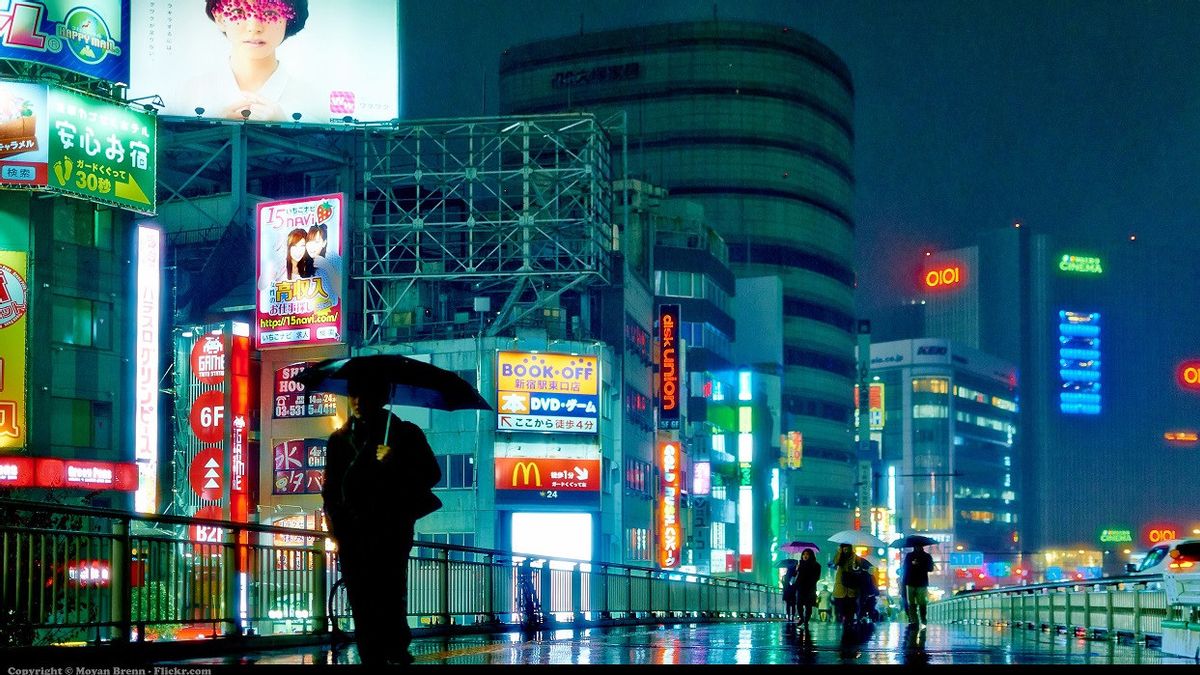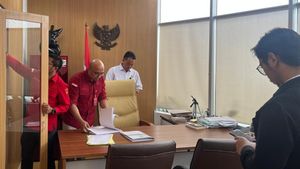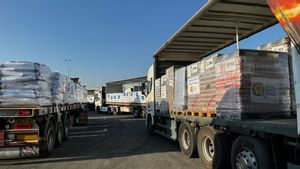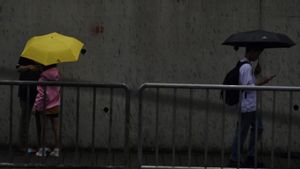JAKARTA - A magnitude 5.9 earthquake rocked the Tokyo area, Japan late Thursday, injuring more than 20 people and stranded passengers amid traffic disruptions, with some areas seeing their water supplies cut off.
Many train services, including some bullet trains as well as subway lines in the capital, were suspended after the earthquake. Although some train operators resumed operations later, many people affected by the disruption lined up to get taxis at some stations.
Quoting Kyodo News October 8, the quake, which occurred at 10:41 p.m. local time, shook parts of Tokyo and Saitama prefectures, with a focus on the quake in northwest Chiba Prefecture at a depth of about 75 kilometers, the Japan Meteorological Agency said. However, the earthquake did not generate a tsunami warning.
More than 20 people were injured in Tokyo and surrounding prefectures, including a female passenger who fell and hit her head when a train suddenly stopped, according to police and firefighters.
Among those injured were also three people who fell when an automatically operated train derailed slightly in Tokyo's Adachi Area after the earthquake.
There have been many reports of broken pipes and cut water supplies in Tokyo, officials said. Water is seen gushing out of a pipe running through a river in Ichihara, Chiba Prefecture, apparently due to earthquake damage.
Separately, Prime Minister Fumio Kishida told reporters he had ordered officials to help earthquake victims and prevent further damage.
Meanwhile, Japan's main spokesman, Chief Cabinet Secretary Hirokazu Matsuno, said at a press conference, no abnormalities were reported at the nuclear facility.
Nevertheless, the quake triggered a blackout that affected about 250 households in the Japanese capital around 11 p.m., but power was eventually restored. At JR Shinagawa Station, crew staff guide passengers around the ticket gates due to the temporary blackout.
Many train services, including some bullet trains as well as subway services in the capital, were suspended after the earthquake but resumed operations later.
There were no reports of damage at Narita airport, east of Tokyo, while transport authorities said all four runways at Tokyo's Haneda airport had reopened after an inspection following a temporary closure.
The last time an earthquake of magnitude 5 or more was recorded in Tokyo was March 11, 2011, when a magnitude 9.0 quake devastated northeastern Japan and triggered a large tsunami, the agency said.
The agency initially said the magnitude of the quake was 6.1 but revised it down on Friday morning. In addition, the agency warned that an earthquake of similar intensity could occur within a week, with one official estimating a 10 to 20 percent chance based on previous quakes.
SEE ALSO:
While the strong shaking frightened many in the Tokyo area, the agency said the latest quake was of a smaller scale than feared in the future, which would focus just below the metropolitan area and cause massive devastation.
The latest quake also triggered what is called a long-term ground motion, which causes slow but significant swaying of tall buildings for long periods of time and can cause injury to people inside. This phenomenon was observed in the capital when a large earthquake hit northeastern Japan in March 2011.
The quake came a day after another 5.9 magnitude quake struck northeastern Japan on Wednesday morning, leaving at least three people injured in Aomori and Iwate prefectures.
The English, Chinese, Japanese, Arabic, and French versions are automatically generated by the AI. So there may still be inaccuracies in translating, please always see Indonesian as our main language. (system supported by DigitalSiber.id)


















